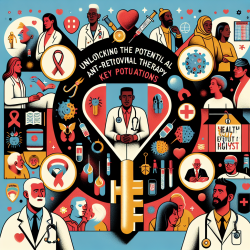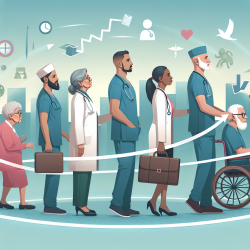Introduction
In the realm of HIV/AIDS treatment, antiretroviral therapy (ART) has been a game-changer, significantly reducing disease progression and mortality rates. However, the benefits of ART are not equally accessible to all, particularly for key affected populations (KPs) such as men who have sex with men (MSM), sex workers, people who inject drugs (PWID), and transgender individuals. These groups face unique challenges that impede their access to essential HIV services, including ART. This blog delves into the findings of a pivotal research article, "Maximizing the benefits of antiretroviral therapy for key affected populations," and explores how practitioners can enhance their skills and improve outcomes for these populations.
Understanding the Barriers
Recent analyses reveal that HIV prevalence among KPs is alarmingly higher compared to the general population. This disparity is exacerbated by a myriad of social, legal, and economic barriers. Stigma, discrimination, and punitive laws are prevalent, limiting access to ART and other HIV interventions. The World Health Organization's 2014 guidelines highlight the potential for increased ART access among KPs, but emphasize that without addressing these barriers, improvements will remain elusive.
Implementing Rights-Based Approaches
Practitioners are encouraged to adopt rights-based approaches, which are crucial for expanding ART access. This involves creating supportive legal and policy environments, ensuring informed consent, and prioritizing the treatment of individuals living with HIV. Prevention, while important, should not overshadow the primary objective of treating the person. Practitioners can advocate for policy changes that decriminalize behaviors associated with KPs, thereby reducing stigma and discrimination.
Data-Driven Decision Making
One of the significant challenges in addressing the needs of KPs is the lack of disaggregated data. Practitioners can play a pivotal role in collecting and analyzing data specific to these populations, which is essential for tailoring interventions effectively. By understanding the unique risk factors and barriers faced by KPs, practitioners can develop targeted strategies that enhance ART coverage and adherence.
Encouraging Further Research
The research underscores the need for continued investigation into the specific needs of KPs. Practitioners are encouraged to engage in research initiatives that explore innovative solutions to overcome the barriers faced by these populations. Collaborative efforts between healthcare providers, policymakers, and community organizations are vital for driving change and improving health outcomes.
Conclusion
Maximizing the benefits of ART for KPs requires a concerted effort to address the systemic barriers that hinder access to care. Practitioners have a critical role in advocating for equitable healthcare, implementing rights-based approaches, and utilizing data to inform their practices. By doing so, they can significantly enhance the impact of ART and contribute to the global effort to end the HIV/AIDS epidemic.
To read the original research paper, please follow this link: Maximizing the benefits of antiretroviral therapy for key affected populations.










